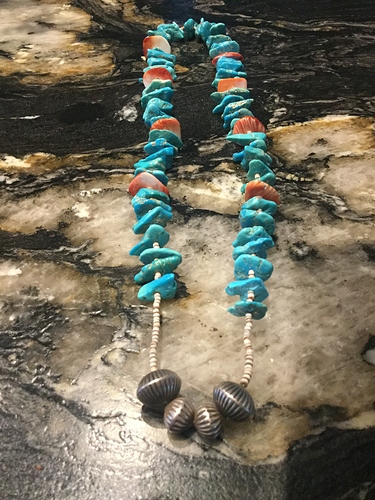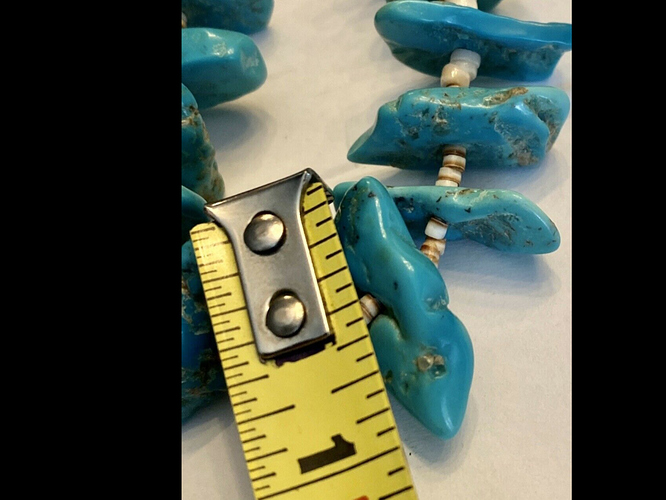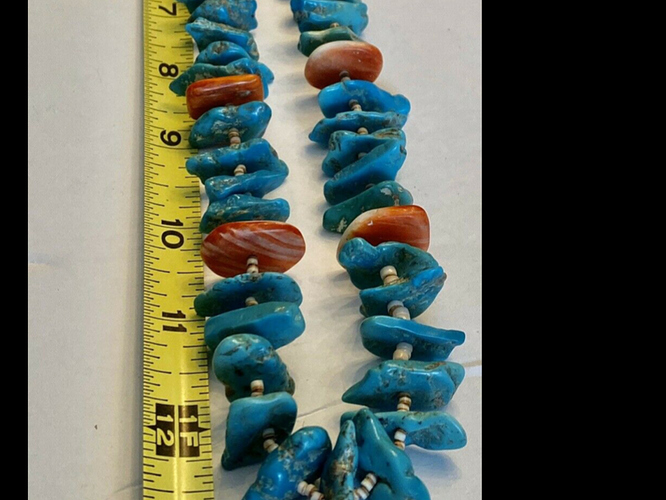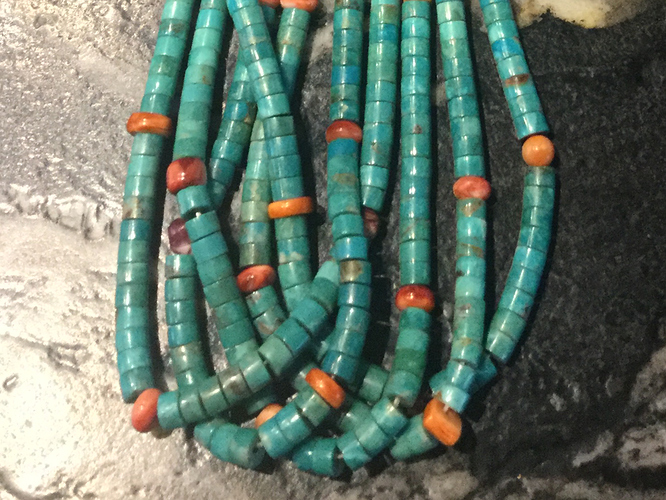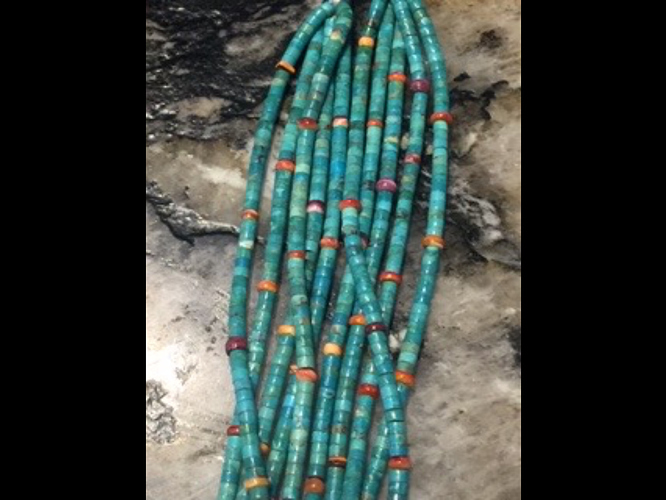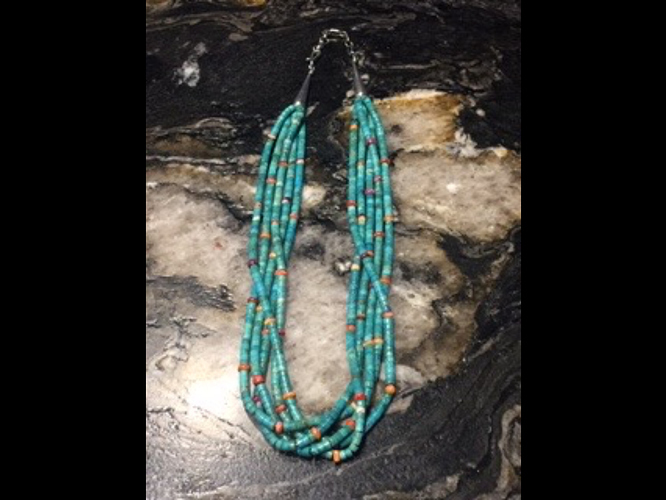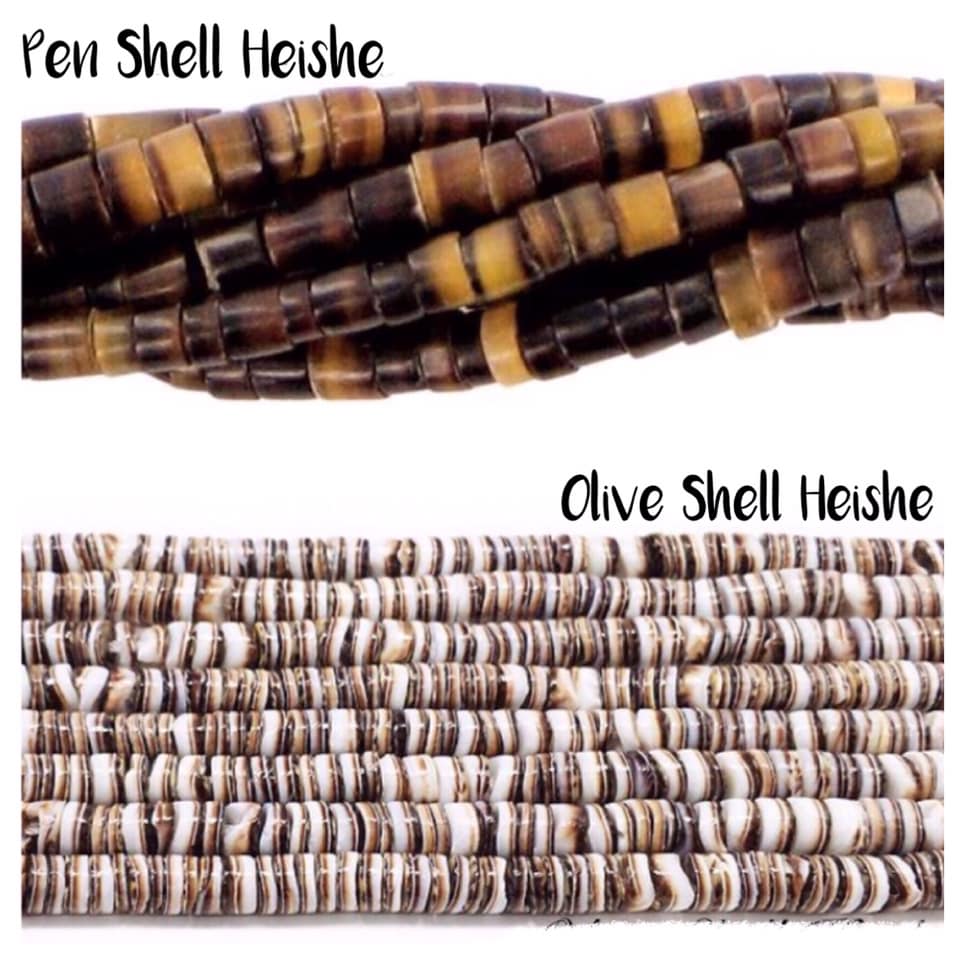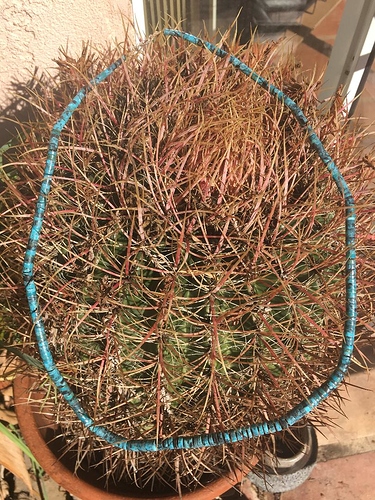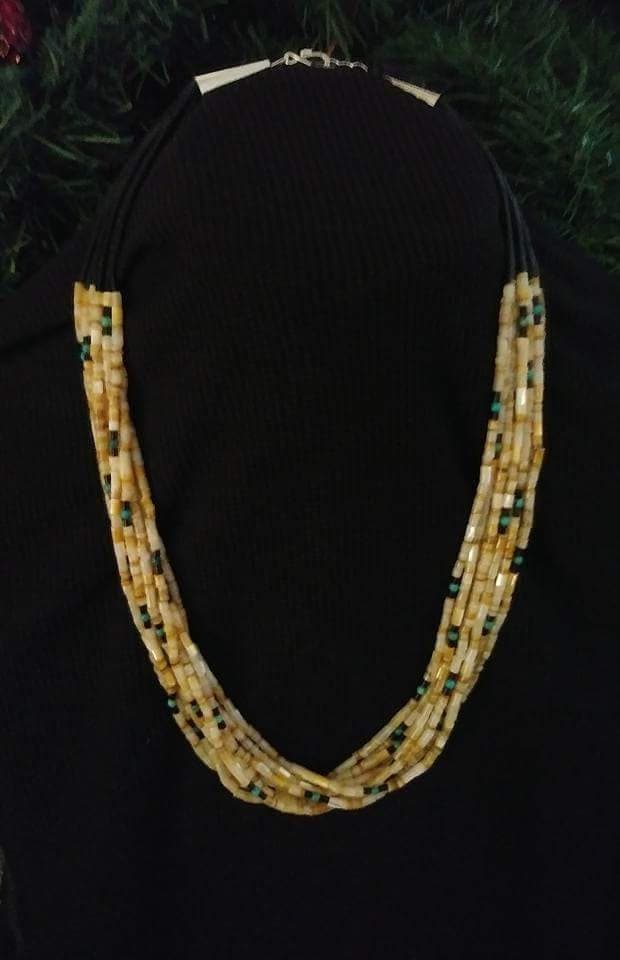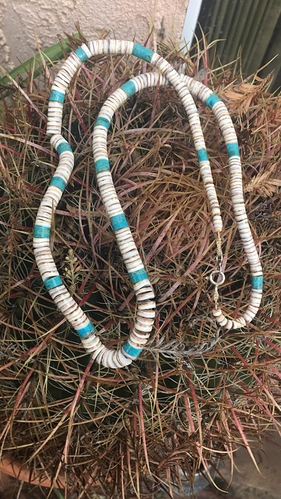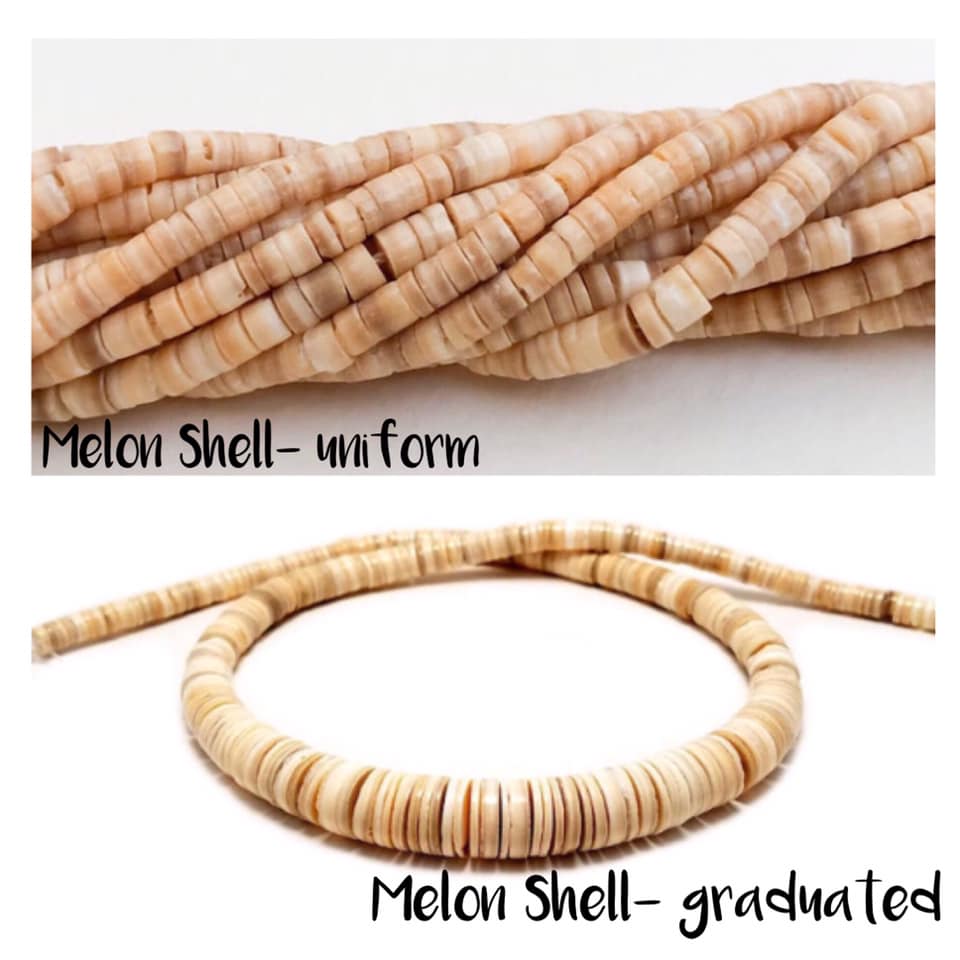I have a few necklaces I’d like more information on. The first is one you see all over the place.Standard turquoise and Heishi. What do you look for on dating them. How about the Heishi couldn’t find on the Internet how to distinguish Taiwanese from others? Stabilized turquoise?
The second is a five strand necklace. The necklace seems to have quality craftsmanship and the turquoise heishi is smooth to the touch. I really like the different colored spiny oyster beads. Would this be considered Santo Domingo? Age and value would be great. Thanks for the help!!
Heishi in first one appears to be pen shell. A lot was imported from the Philippines.
Yes the darker is Pen Shell. Do you know how to tell when the Olive Shell is imported? Can’t find it explained on the web. The first one has really small Olive Shell. Thanks
Well…I don’t usually weigh in on necklaces, mainly because IMHO they tend to be the easiest to forge off as one can typically buy the beads already formed and just string it. It is really time consuming and you waste a lot of material making strand necklaces. But, I can offer what little advice and thoughts. If I am incorrect, please feel free to correct:
- almost all shell heishe is imported. You can literally buy strings of it. A lot of the turquoise use is stabilized. Why? It is easier to cut a stabilized stone (and cheaper because you don’t break as many).
- Very few are marked. Sometimes, I look at the cones toward the closure, as there may be mark there indicating who made it.
- One way that may help identify it as good workmanship is the use of graduated turquoise. It is really hard to cut, drill, grind, and polish beads similar to your five strand. When one really wants to do a lot of work, they graduate the grind so the beads get bigger toward the center. Yes, I believe your five strand to be Santo Domingo (the use of the shell is still a fairly Santo Domingo thing) , but now there are a number of native americans who are not Santo Domingo who make strand necklaces.
- The five strand you have pictured is polychromatic. That would tell me that someone did not buy a set of beads that were color enhanced. That can be a tip off that this is natural turquoise, but look “between” the beads to see if you can see what the stone looks like. Also, if the beads appear to be of different cut lengths, that could be an indicator it was done by hand (you would expect more variance).
- The “hidden” things are just as important. Is it on sinew? Is it on string? How many strands of string?
- Check the closure. Is it machine made or man made? How is the stringing material “mounted” to the closure? Look into the closure to see the details.
I have a few pieces (okay, more than a few). This is kinda my checklist when I buy them on the secondary market. As with most things, if the details are there, someone spent some time on it. Hope this helps!
My fav is probably a Ray Lovato Paiute turquoise choker (bought from a dealer). Paiute is my fav turquoise and Ray Lovato makes them the old fashioned way. Though I also have a graduated piece made by a navajo (I can’t remember his name though).
@Michael-CA thanks so much for the detailed info. This helps a great deal. I only have four necklaces. I’m reluctant to buy them due to my limited knowledge on what to look for. I definitely can tell or feel the 5 strand has better craftsmanship. I looked for the things you mentioned. No markings and it is stung with three strings per strand. I would love to see your Paiute choker. Hope you will post it. Thanks again
Yes, olive shell is correct.
That’s a nice diagram @Karne😉
I have recently had the opportunity to purchase 3 new necklaces directly from the artists who made them. Talk about an education. The graduated beads are certainly a level up. Also, learning about the Kewa bead makers’ identifying marks, such as a special bead and then perhaps end of strand knotting techniques. I would think 99% use a synthetic sinew for stringing and I understand a waxed string for the back wrap, if preferred. The single strands are both by the same artist.
For older strands, I’m learning about the traditions of hook and eye closure construction. Of course split rings, pre fabbed hook & eye and spring clasps are all (sadly) newer additions. Thinking time constraints.
Lots of great information. Thank You!
